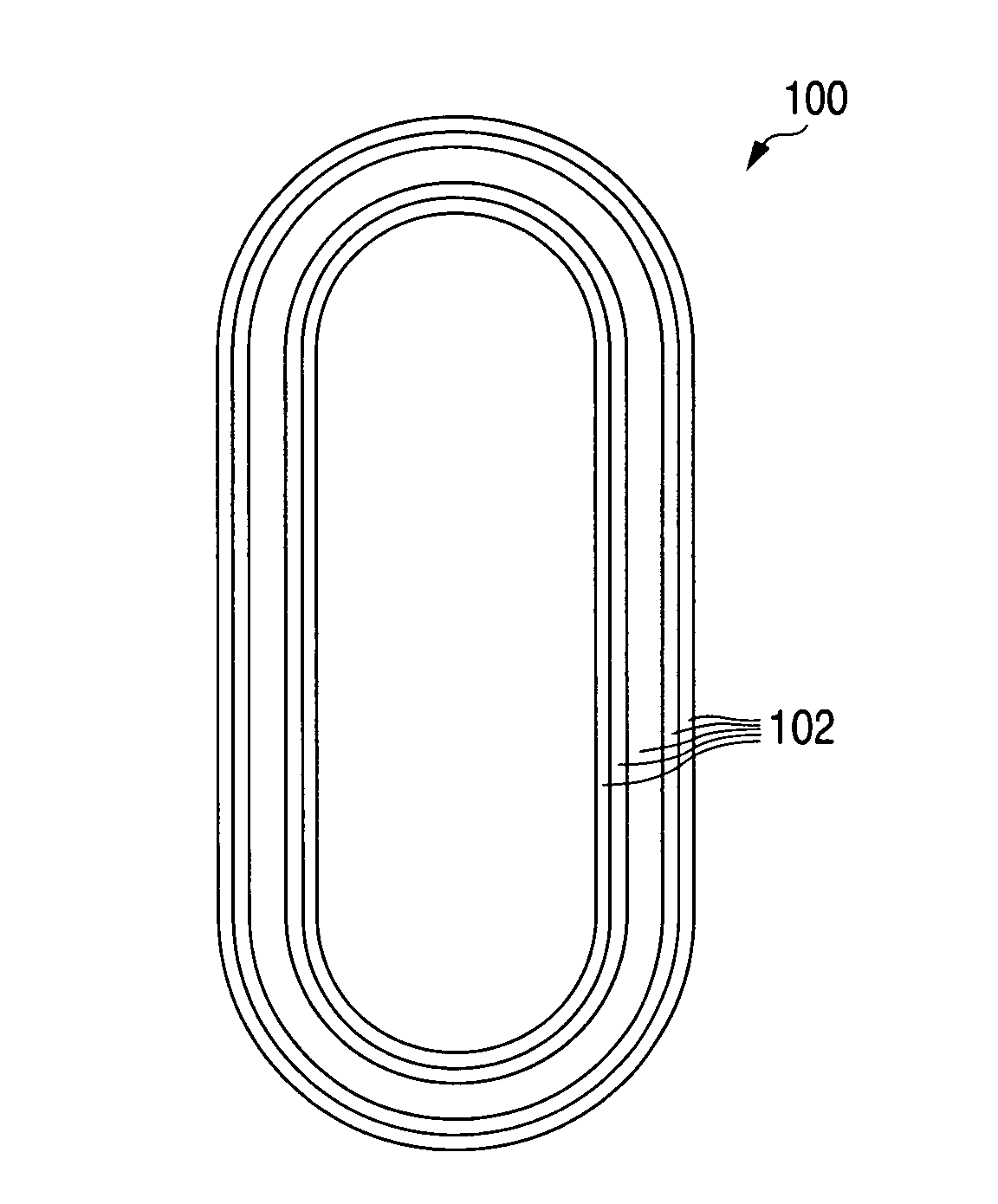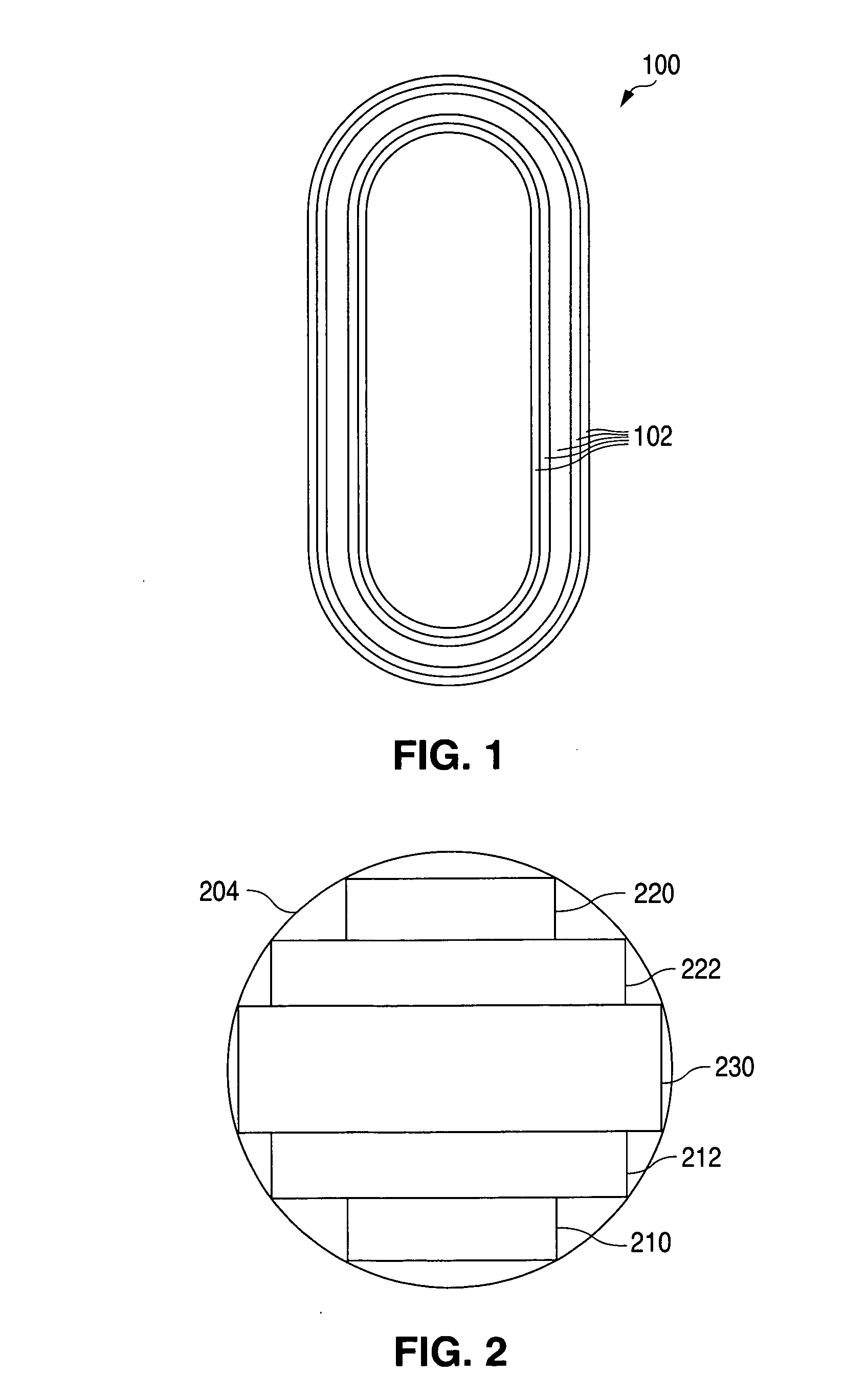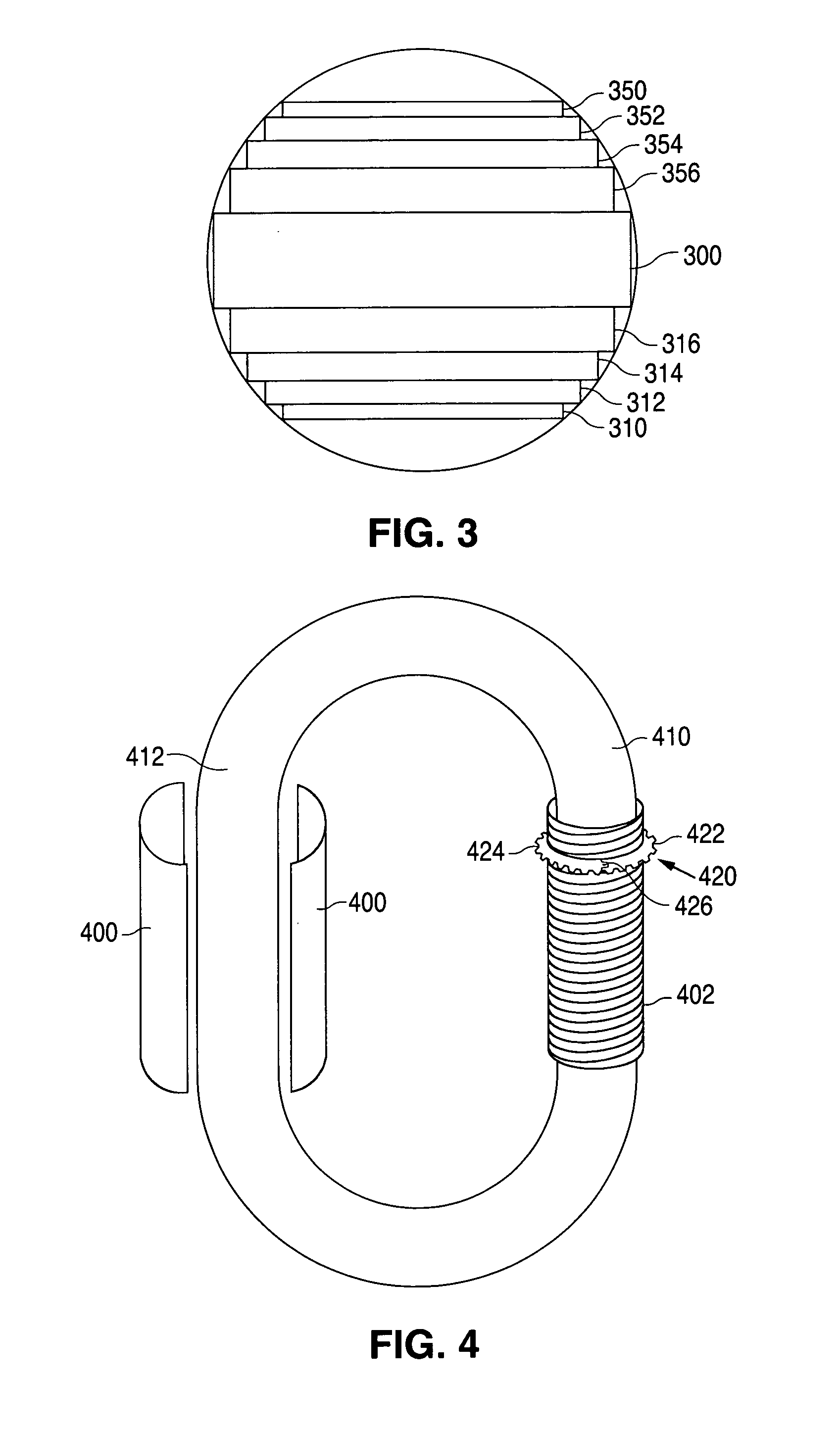Wound transformer core and method of manufacture
a transformer core and core technology, applied in the field of wound transformer cores, can solve the problems of high maintenance cost, high cost of cutting and stacking sheets, and high cost of flat stack technology, and achieve the effect of saving time and cost, and reducing the cost of flat stacking
- Summary
- Abstract
- Description
- Claims
- Application Information
AI Technical Summary
Benefits of technology
Problems solved by technology
Method used
Image
Examples
Embodiment Construction
[0063]The present invention provides a wound transformer core that is produced as a new ring-like wound core configuration that allows coils subsequently to be wound on the legs of the core without cutting the wound layers of the core.
[0064]FIG. 1 shows a top view of one embodiment of a wound transformer core 100 of the invention. The ring-like structure of the core 100 is made up of multiple rings 102 of magnetic steel, e.g., amorphous metal strip or nano-grain steel material or silicon steel, of different widths (not shown in FIG. 1) wound on top of one another. Insofar as the thickness of the magnetic steel is less than 2.5 mil, e.g., amorphous metal or nano-grain steel, the strip material will be referred to herein in as thin-strip metal.
[0065]The different widths of the rings 102 are best illustrated in the cross-sectional views of FIGS. 2 and 3. The ring-like structure defining the core 200 is made up of multiple rings, each of which is wound from one or more strips of magneti...
PUM
| Property | Measurement | Unit |
|---|---|---|
| thick | aaaaa | aaaaa |
| thick | aaaaa | aaaaa |
| thick | aaaaa | aaaaa |
Abstract
Description
Claims
Application Information
 Login to View More
Login to View More - R&D
- Intellectual Property
- Life Sciences
- Materials
- Tech Scout
- Unparalleled Data Quality
- Higher Quality Content
- 60% Fewer Hallucinations
Browse by: Latest US Patents, China's latest patents, Technical Efficacy Thesaurus, Application Domain, Technology Topic, Popular Technical Reports.
© 2025 PatSnap. All rights reserved.Legal|Privacy policy|Modern Slavery Act Transparency Statement|Sitemap|About US| Contact US: help@patsnap.com



